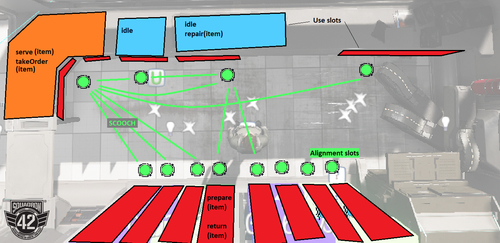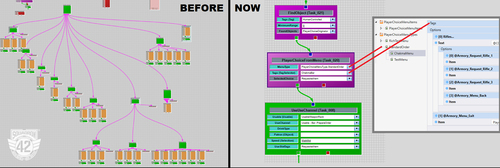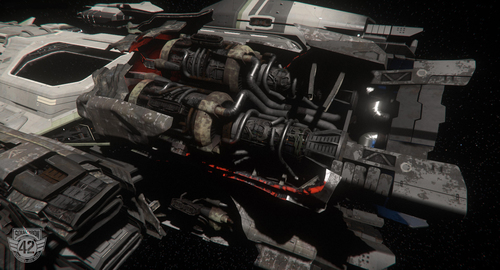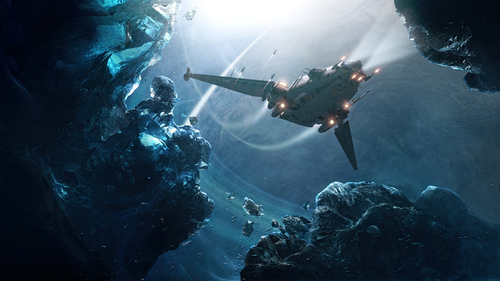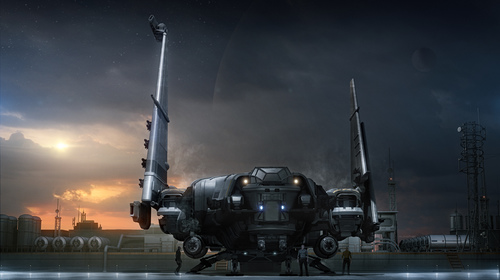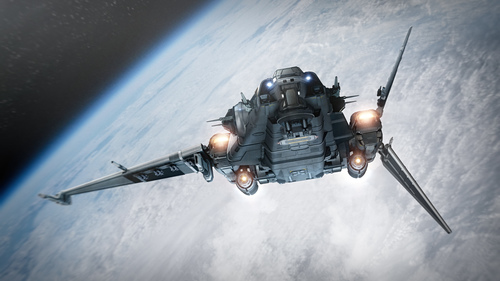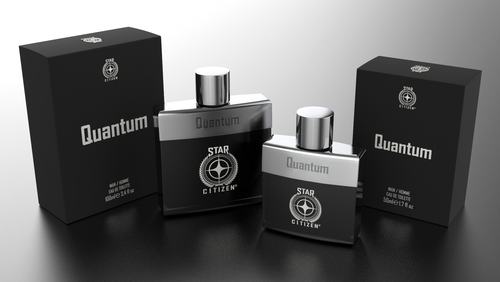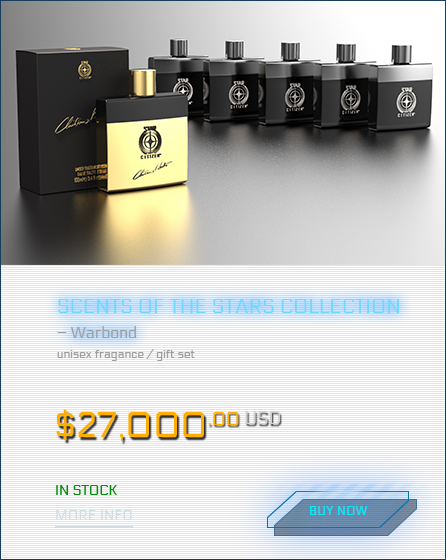
Gamescom 2949 is right around the corner, and we’re looking forward to meeting all the Star Citizen fans making the trip to Cologne. Members of the community team will be on hand at Bar Citizen events in the evenings, with Friday’s meetup including special guests Erin Roberts and Brian Chambers.
Plus, members of the community team will have loads of exclusive goodies to give away, so if you see them, don’t hesitate to say hello!
Meetups in Cologne during Gamescom Week
Join your fellow Star Citizens and members of the CIG development staff at the following locations:


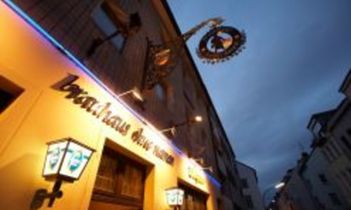
Please join us at any or all of the events above and get to know the Star Citizen developers & community.
Source: https://robertsspaceindustries.com/comm-link/transmission/17039-Gamescom-2949-Details
April 2949 Subscriber Flair
April 2949 Subscriber Flair

Subscribers
Centurions will receive the RSI Venture Rust Society Leg Armor. RSI’s Venture is a lightweight armor set built for the unknown. This EVA-rated protection system features an undersuit built from a durable polymer weave that’s designed to withstand extreme environmental conditions and features component armor pieces to protect you against impacts and particulates. The Rust Society edition adds a red and tan color scheme so you look good while working hard.
Imperator Subscribers
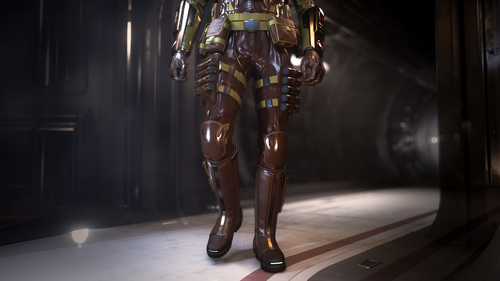
Imperator-level subscribers get the RSI MacFlex Rust Society Leg Armor. Whether you’re planetside or in vacuum, RSI’s MacFlex industrial armor set has your back. Reinforced plating keeps you safe from environmental hazards while the array of pouches keep your tools accessible. The Rust Society edition celebrates blue-collar workers with an exclusive red and tan coloration that hides dirt and wear and tear well.
If you’re an active subscriber, these items will be added to your account on April 21st.
If you aren’t a subscriber but want to sport these fancy pants, make sure you subscribe no later than April 20th.
More information about subscriptions can be found here
Source: https://robertsspaceindustries.com/comm-link/transmission/17040-April-2949-Subscriber-Flair
Portfolio: Casse Aerospace
This portfolio originally appeared in Jump Point 5.3.
While Casse Aerospace bears the name of an engineering legend, the company itself has faded from memory for all but the most dedicated ship enthusiasts. Or at least that was the case for over a century until Anvil Aerospace resurrected one of Casse’s designs and alongside it, interest in the man himself and the ships he built.
An Edleson Design Institute Hall of Fame inductee in 2902, Leonard Casse has earned a place in the annals of history as one of the top spacecraft visionaries of the Messer Era. While the general populace may wind up considering his creation of the Hurricane fighter the most enduring part of his legacy, his effect on the industry overall is not limited to that one design. Cited by ship design luminaries such as J. Harris Arnold, Silas Koerner, and Jules Parliegh as a prime source of inspiration, Casse’s influence can be seen in many spacecraft being flown today. From the humble RSI Aurora to the mighty Anvil Hornet, several of the Empire’s most popular vehicles can trace their lineage to Casse’s unique vision.
Taking Off
Hired fresh out of university, Casse began his career as a junior aerospace engineer for RSI in 2587, securing himself a position on the Starbright transport team. This simple and functional ship, often referred to as the Aurora’s spiritual predecessor, had been redesigned for the 2590 model year release and was about to go into full production. Assigned to review the machining specs for the ventral hull piece before the manufacturing run began, Casse noticed that the updated nozzle placement, while adding fuel efficiency, was going to cause potentially dangerous additional stresses to the ship’s frame. He promptly reported his findings to the Starbright’s lead designer, only to be told that the effect was negligible and that he should trust the more experienced members of the team.
Unsatisfied with that result, Casse took his report directly to the head of the company, CEO Thessaly Vanowen. Impressed with the young engineer, Vanowen ordered a separate independent team to audit the Starbright’s testing results. Two weeks later, the project was completely halted for a total rework of the internal struts. The 2590 Starbright would now be released as the 2591, with Casse promoted to a full engineer on the team.
His rise after that was rapid. In 2595 Casse was named lead designer for the 2600 Starbright. RSI saw the new century as the perfect time to relaunch the Starbright and was hoping that Casse would be the ideal candidate to revitalize the aging ship line. He did not disappoint. Rebuilt from the ground up, the 2600 Starbright was praised for its innovative entry system and all-new custom IFCS that integrated flawlessly with the ship’s thrusters for unmatched responsiveness. What was previously thought of as “just another transport” became elevated to “a flying experience that everyone should have the pleasure of enjoying.” Even today, centuries later, collectors still covet the 2600 Starbright for their personal fleets. Perhaps what makes it so valued though, even beyond its quality, is that it would be the only ship Casse designed for RSI.
A New Way to Fly
As soon as the assembly line began rolling out the ship he had labored on for close to four years, Casse announced at the beginning of 2599 that he would be leaving to start his own company. According to later biographers, Casse described his time at RSI as a constant struggle. From that first instance when his suggestions were passed over due to his junior status, he felt that good design was too often sacrificed in order to placate a hierarchical organization trying to justify its own worth. “As soon as you have a ship manufacturing company where almost half the people who work there have nothing to do with manufacturing ships, you’re going to have problems,” he would state in a later interview. He swore that the company he was building, Casse Aerospace, would be different. He would only hire a small team of people whom he could trust to do quality work at the standards he demanded, and then he would leave them to do it. Everyone’s opinion would have equal weight, with all final decisions left to himself. It was unorthodox for ship manufacturing, but under the strong vision and guidance of Casse, the flat organization style worked.
It was 2604 when Casse Aerospace released its first ship, the limited-run Cosmo Sloop. A leisure craft with a focus on ease of use, the hull premiered the open circle signet and curved wings that Casse would use on all his future designs. The reviews of this cutting-edge craft were universally positive, but unfortunately the timing of the ship’s release would prove to be its undoing.
The Second Tevarin War had begun the year prior and with enemy forces pushing their way through Humanity’s defenses, the personal leisure craft market bottomed out. With all their fortunes riding on sales of the Cosmo, Casse Aerospace found themselves struggling to keep their fledgling company afloat and decided that the best course of action was to join the war effort.
Calm Before the Storm
The Tevarin fleet had undergone significant tech upgrades during their exodus, and the UEE Naval forces were having a difficult time overcoming the new phalanx shields. In 2605, Navy officials called upon the Empire’s ship manufacturers for a solution. Though he had never worked on a combat ship before, Casse knew that the credits such a lucrative contract would bring could save his company, and so he set about designing the solution to Humanity’s current problems.
Analyzing battle footage of Naval forces engaging the Tevarin led Casse to the conclusion that trying to overwhelm the Phalanx shields was a losing proposition. The bulk of damage that the Navy was able to inflict occurred when a Tevarin was caught off guard. The goal of his design would be to increase the frequency with which those opportunities would occur and maximize the damage inflicted during them. To help his ship achieve this goal, he borrowed a page from the enemy’s playbook. If the Tevarin were operating in teams of two, one pilot and one shield operator, his ship could also be manned by a team, a pilot and a turret gunner. The design he submitted to the Navy stood in sharp contrast to those submitted by industry leaders like Aegis, and it surprised many when the Navy granted a contract to the unusual contender. Casse Aerospace immediately began work on what would become the Hurricane.
Launched late in 2607, the Casse Hurricane suffered some setbacks during the testing phase. Though pilots liked the power-to-weight ratio and the extra punch its quad-turret offered, the high degree of coordination needed between the pilot and gunner had a very steep learning curve. Because of this, the Hurricane didn’t enter active combat until 2609. While they were used to devastating effect in a few instrumental actions, the war ended shortly after their deployment in 2610.
Trying to capitalize on the success of the Hurricane, Casse Aerospace used the goodwill they had garnered to win a contract designing a long-range patrol ship suited to guard the growing Xi’an front. However, before that ship could be finished, Leonard Casse tragically passed away in 2615 after being involved in a deadly in-atmosphere collision. Reeling from the loss of their founder and leader, Casse Aerospace attempted to finish the project, but without Casse’s personal involvement, military officials lost confidence and pulled the plug.
Surviving off continuing Hurricane sales, Casse Aerospace attempted to return to their roots and release an updated Cosmo but again, without Casse behind the project, it was not a commercial success. Things were looking dire for the company, and when the Navy announced the Hurricane would be retired from active duty, it signaled the end. The market was soon flush with surplus Hurricanes and any remaining new sales dried up. With little options remaining, the board sold the company to an investment firm. From there it passed hands several times before falling into receivership and becoming nothing more than a footnote of history for the next century.
The Next Generation
When J. Harris Arnold was in school, he was obsessed with the works of Leonard Casse. To him, the mostly forgotten engineer represented everything he loved about ship design. When he eventually started his own ship manufacturing company, Arnold drew heavy inspiration from Casse’s business model and ships for his own designs, utilizing such signature elements as the curved wings and open circle signet. The similarities were such that Arnold and his fledgling company, Anvil Aerospace, was sued by the holding firm who had bought the rights to Casse’s designs. Arnold decided to settle the case by purchasing all of Casse Aerospace’s portfolio himself. Now the owner of Casse’s legacy, Arnold sought an opportunity to put the company’s original designs to use, but one didn’t present itself for close to seventy years.
The UEE was suffering as Vanduul attacks in Caliban grew in frequency in a manner similar to the ones that led to the fall of Virgil and Tiber. Eager to turn their efforts around, the Navy brass were looking for a new ship that would enable their pilots to cut engagement times down. Their theory was that the faster a Vanduul fighter could be taken out, the less opportunity it would have to cause Human casualties. Anvil provided the solution in the form of a resurrected Hurricane. The updated design still bore all the hallmarks of Casse’s original, but with the addition of Anvil’s proven conflict expertise. The result was a game changer for the war effort, and in 2878 a new generation of Navy pilots began to use the Hurricane to devastating effect.
Today, Casse and the company he built have finally taken their proper place in history books, thanks to the efforts of Arnold and others who sought to keep their memory alive. While he may have only designed three ships in his lifetime, Leonard Casse’s contributions extend well beyond what he left behind in the shipyard, as he has inspired countless numbers to see the universe a little bit differently. The plaque honoring him in the Edleson Design Institute Hall of Fame cites a fitting Casse quotation, “Good design solves a problem, bad design creates new ones.”
Source: https://robertsspaceindustries.com/comm-link/spectrum-dispatch/17037-Portfolio-Casse-Aerospace
Squadron 42 Monthly Report: February 2019
Squadron 42 Monthly Report: February 2019
This is a cross-post of the report that was recently sent out via the monthly Squadron 42 newsletter. We’re publishing this a second time as a Comm-Link to make it easier for the community to reference back to, and plan on following this process for future Squadron 42 Monthly Reports.
Attention Recruits,
What you are about to read is the latest information on the continuing development of Squadron 42 (SCI des: SQ42).
Read on for classified details from every corner of the planet, collected over the course of the last month, concerning Squadron 42-related work. The information contained in this communication is extremely sensitive and it is of paramount importance that it does not fall into the wrong hands. Purge all records after reading.
UEE Naval High Command
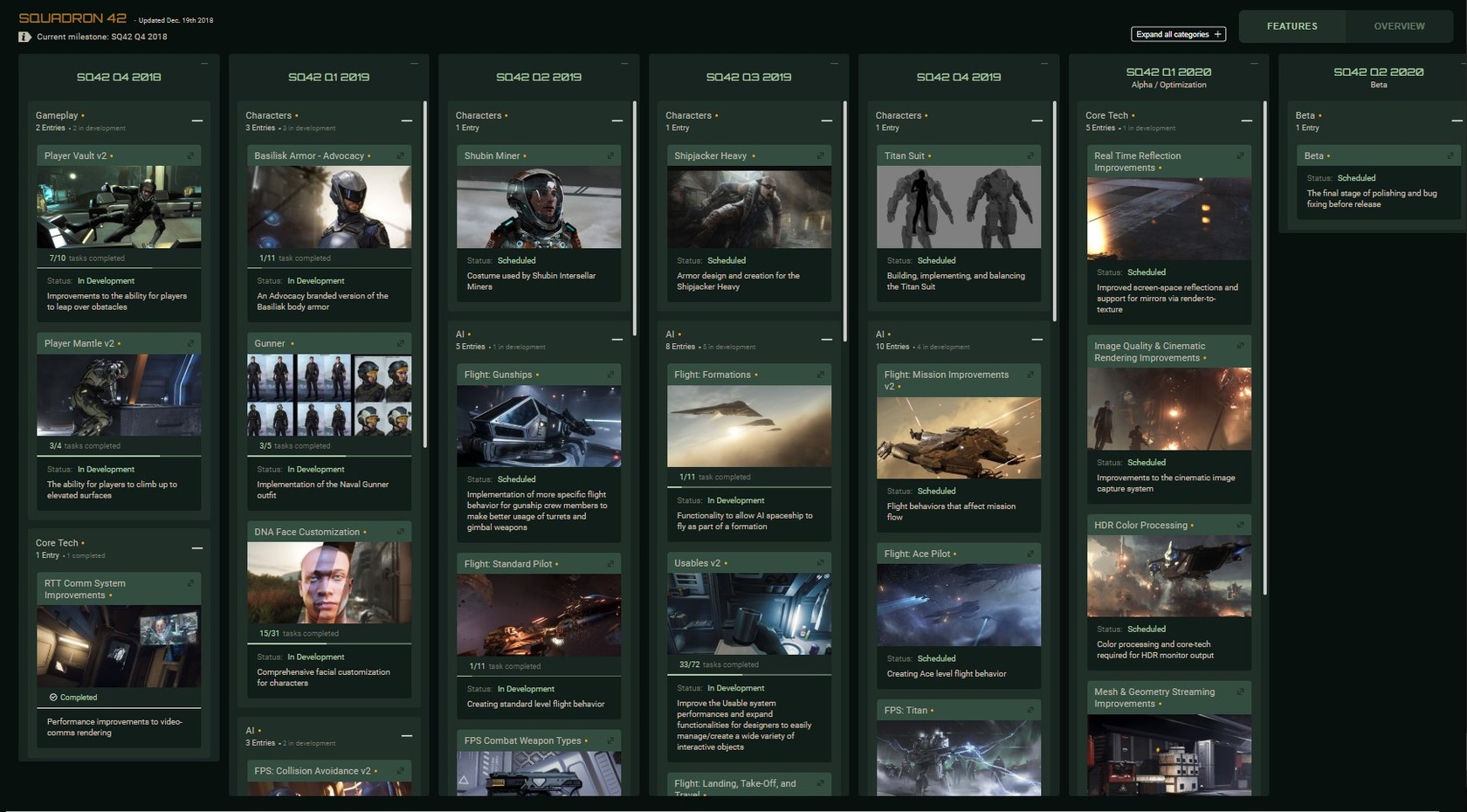
AI (Ships)
AI (Character)
Art (Characters)
Art (Environment)
Art (Ships)
Audio
Cinematics
Engineering
Features (Vehicles)
Gimbal Assist and its related HUD improvements were finalized and polished to allow for better balancing of this new weapon control scheme. Turrets were also improved, with the team adding a HUD and keybinds for input sensitivity, implementing adjustable speeds for gimbal target-movement based on proximity to center aim, and fixing bugs the caused snapping and erratic movement.
Graphics
Level Design
Narrative
Programming
QA
System Design
For Ship AI, they made general improvements throughout, including the way AI ships attempt to avoid the player’s fire. For social AI, they’re working on Duncan Chakma, the Idris’ master at arms. This character has some of the more complex behaviors and solving him should speed up the development of all other characters that encompass complex player choices (such as movement from station to station, interacting with items, and giving/taking back weapons). On the FPS AI side, they focused on restructuring behaviors so that they become more modular, with the goal to make it easier to implement specific chunks of logic and influence the AI’s skillset.
User Interface (UI)
VFX
Weapons
Covert Intel
Conclusion
WE’LL SEE YOU NEXT MONTH…
$(function() { Page.init();
window.Page = new RSI.Game.About(); });
Source: https://robertsspaceindustries.com/comm-link/transmission/17031-Squadron-42-Monthly-Report-February-2019
QoL Update

Fractional Reloading, The large Oilrig, New Weapons, A tonne of Quality of Life updates and more …Source: https://rust.facepunch.com/blog/qol-update/
Q&A: Drake Corsair
Q&A: Drake Corsair
Following the launch of the Corsair from Drake Interplanetary, we took your community-voted questions to our designers to give you more information on the recently unveiled exploration vessel.
Special thanks to John Crewe for answering these questions.
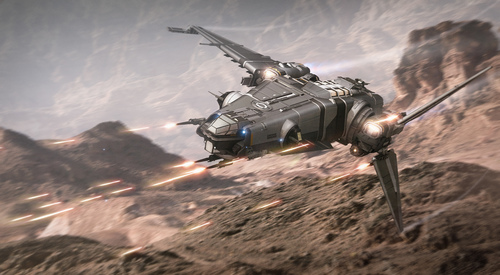
Can you please clarify your stance on Drake ship durability? We want tough and versatile no-frills ships, not paper ships that will fall apart when you look at them as some devs have stated. Which is it?
When we say “paper ships”, we say it with regards to our entire line-up, where Aegis and Anvil typically have more armor and can be regarded as very tough. In comparison, Drake ships are relatively under-armored, which we exaggerate as “paper thin”. While they may be less durable, their defense is more than enough for the intended role they’re pitched at and they’re often up-gunned to offset any deficit.
With Drake’s stance on barebones necessities, how will the living quarters actually be in comparison with other ships?
While not as luxurious as other companies’ living quarters, Drake still provides all the necessities such as a bed, kitchen, washroom, and storage for every crewperson’s weapons and clothing. Other ships may give each crewmember their own facilities, but Drake feels this is a waste of space and resources that could be better used elsewhere.
Can the pilot get out of their seat while the co-pilot is in the downward position (this was a problem in the original cutlass that was resolved by the rework)?
Yes. Unlike the original Cutlass, there’s plenty of room for the pilot to exit their seat and walk around where the co-pilot’s seat was. When the co-pilot seat is deployed to the lower level, a hatch covers the hole to provide a flat traversal surface.
Does the pilot control the 4 x S5 (S4 gimballed) front AND 2 x S4 (S3 gimballed) right wing guns?
The pilot controls these weapons by default, although in the future (like other ships), their control will be able to be delegated to another station.
With this special pilot/co-pilot seating arrangement, will both seats provide the option to fly the ship?
Both seats have full control inputs available, so this will be possible.
From what we saw in the whitebox-clip, there’s plenty of open hangar space left after the Rover is parked within the Corsair. Can’t there be a few SCUs left over although the rover is on board?
We want this ship to have similar trade-offs as the Constellation in terms of ‘cargo space versus vehicle storage’, so currently there are no plans to allow this. However, there will always be space to put cargo items outside of the grids on all ships providing you can get them in, though they won’t be securely locked down.
I own several other exploration ships, what makes the Corsair stand out? In other words, is its only trick the big guns?
The Corsair offers the same functionality as a variety of other exploration ships but is catered towards a more offensive style of gameplay. It also has a different set of roles for a crew of four compared to, say, the Constellation.
Due to the fact that it’s an exploration ship, the Corsair has a fuel intake system. Does it also have a refinery?
The Corsair does not come with a refinery, nor is it capable of equipping one.
What are the component classes available to this ship? Civilian and Industrial?
Correct and these two categories suit the role of the ship perfectly.
With the wings folded upwards in landing mode, will the Corsair fit in front-entry hangar doors, like those at the Rest Stops?
Yes. When designing a ship, these metrics are considered and the Corsair will fit in medium/size four hangars (the same as the Retaliator and Constellation).
What types of weapon and armor storage are on the ship? How many weapons per player and what level of armor (light, medium or heavy)?
Each crew member can store one set of armor (excluding what they’re wearing), two primary weapons, and one sidearm.
Are there any crew stations beyond the turrets and co-pilot, for example, an engineering computer or scanning station?
There is an engineering station towards the rear of the ship.
How many people can use the forward lift at a time?
The front lift can take the entire crew, so four at a time.
Does this ship have landing lights so you can see what’s underneath you when you land on the dark side of a moon? It’s an exploration ship, so there’s not always a landing pad available.
The ship will have a variety of lighting when it’s released. This is a popular request players have asked for on existing ships and something we plan to roll out over time.
$(function() { Page.init();
window.Page = new RSI.Game.About(); });
Source: https://robertsspaceindustries.com/comm-link/engineering/17030-Q-A-Drake-Corsair
Galactic Guide: Kallis System
This Galactic Guide originally appeared in Jump Point 5.2.
A Star Is Born
A whirling mass of potential, the recently discovered Kallis system has excited scientists and researchers the Empire over by offering them a rare opportunity: to witness the formation of a stellar system first hand.
Kallis was first visited in 2921 through its jump point connection with Oso, and initial ICC scans of the system revealed a G-class main sequence star anchoring nine protoplanets in various stages of development. Officially, the system’s discovery is credited to OB Station Chimera, the main research facility in Oso, but many still persist that it should be rightly attributed to former PFC Gabby Rifon.
Part of the Army security force detailed under the Fair Chance Act to protect Oso II from poachers, smugglers, and other trespassers, Rifon served as a long-range scan technician tasked with sweeping the system for errant ships. According to later interviews, Gabby was often “bored as hell” looking for ships hours at a time. Instead she would shrug off her duties and adjust the scan station to search for spatial anomalies. It was during one such unauthorized session that Gabby excitedly noted faint indications of a jump point. Informing her commanding officer of the discovery brought to light the fact that Gabby had been “wasting” hours during her shift. A week before the first ship would traverse the Oso-Kallis jump point, Gabby was dishonorably discharged for improper use of Army resources.
A Second Chance
Almost immediately, it was clear that Kallis (meaning “beloved” in a Martian dialect) was a system to be cherished. Once again, Humanity was getting a chance to witness the birth of a solar system firsthand, and scientists around the Empire pledged to not let the opportunity be squandered as it had been in Gurzil.
When Gurzil, a system still in its accretion phase, was discovered in 2539, scientific access was cut short due to security concerns. Upon the arrival of Xi’an ships in 2542, Gurzil was drafted into the UPE’s recently created Perry Line and set aside to protect Humanity’s borders. For the next several centuries, the system was off-limits to everyone but military forces.
Upon the dissolution of the Perry Line, the scientific community hoped that Gurzil would fall under the protection of the Fair Chance Act. However, various industries lobbied that centuries of military intervention had already damaged the system past its original scientific value and that it would better serve the credit-strapped Empire harvested of its valuable resources. In the end, the Senate voted against applying the Fair Chance Act to Gurzil and decided to allow both research and restricted mining in the system.
The scientific community was strongly motivated to make Kallis a different story.
A Front Row Seat
Within a month of the first scan report from Kallis being released, a bill was introduced on the Senate floor to place the system under the protection of the Fair Chance Act and, this time around, thanks to the pristine status of the system as well as a much more favorable Transitionalist-controlled chamber, the vote passed. The system at once became off-limits to commercial development and general traffic. From that point on, Kallis would be a sanctuary for research and discovery.
Under the guidance of a joint Army and Imperial Science and Technology Foundation governing body, the past two decades have already greatly expanded our knowledge and understanding of the universe around us. Undoubtedly, this is just the start of a trend that will continue for decades to come as research continues in Kallis around the clock and new generations of scientists eagerly await their turn to study nature’s mysteries first hand.
Kallis I
A loose fusion of recently merged planetary embryos, this small developing protoplanet has an aggressively eccentric orbit that has many researchers speculating whether it will break apart before it can establish itself.
Kallis Belt Alpha
As the gravity wakes from the nearby forming worlds tug at this dense orbiting collection of planetesimal, frequent collisions can cause chaotic motion and hazardous travel conditions anywhere nearby.
Kallis II & III
These two rocky terrestrial worlds are currently sharing an orbit, but it is estimated that one of the worlds will eventually pull in enough mass from the surrounding asteroid belts to “win the race” and subsume its sibling.
Kallis Belt Beta
A swirling mass of asteroids and dust grains, this belt is composed of materials with high melting points. Although there is enough mass here to compose three to five planets, orbital resonance with the surrounding worlds has prevented this from happening yet.
Kallis IV, V, VI
These three terrestrial worlds hold special interest for researchers as they have the greatest chance for the potential to one day support life. Kallis IV in particular has a striking resemblance to what many believe Earth must have looked like in its infancy. With active volcanoes possibly forming an atmosphere, researchers are looking into creating monitoring methods capable of lasting the lifetimes it will take to see it form. While Kallis V may not currently have any potential for developing an atmosphere, the swirl of debris orbiting its rocky surface indicates that it may soon have a series of moons to call its own. The least developed of the three, Kallis VI has a surface entirely composed of molten rock, giving it a planetary glow.
OB Station Gryphon
Located near the Kallis-Oso jump point, OB Station Gryphon was sealed late in 2922 and has served as the main operational hub for the entire system ever since. In order to preserve the living experiment that is Kallis and its protoplanets, construction throughout the rest of the system has been extremely limited. While there are small observation posts and scan satellites positioned throughout the system, if you are looking to refuel or restock, Gryphon is your only choice. All deliveries to the system are also routed through the station to ensure that the strict Fair Chance Act protocols are followed.
Despites the system’s focus on serious scholastic pursuits, it has begun to gain notoriety for the unique community that has developed over the years. Between the Army personnel stationed here to guard the system and the young grad students conducting research, the median age of the system’s small population is well under thirty. It is no wonder that the habitation decks can get a bit raucous as researchers (looking to blow off steam after days spent alone in remote obervational outposts) and soldiers (with extra energy after long shifts spent patrolling for trespassers) meet for drinks and heated debates. Toss into the mix a growing number of philosophers and spiritualists who have come seeking deeper truths about the universe’s origins, and you can see why OB Station Gryphon is a destination that’s not quite like anywhere else in the Empire.
Kallis VII & VIII
Located out beyond Kallis’ frost line, the system’s two giants formed from volatile icy compounds and captured hydrogen and helium. Kallis VII has drawn its fair share of exoclimatologists interested in studying its burgeoning storm systems, while Kallis VIII has proven exciting for those seeking to construct a more complete model regarding dynamics and chemistry in ice giant atmospheres.
Kallis IX
A small planetesimal in distant orbit around the sun, Kallis IX has the distinction of being the only celestial body in the system whose surface has been marred by orbital mining lasers, thanks to a joint UEE project with mining conglomerate Shubin Interstellar’s research department seeking to better understand this dwarf planet’s role in the system’s formation.

TRAVEL WARNING
All ships arriving in-system are expected to first stop at OB Station Gryphon to officially register. Traveling anywhere without having acquired the proper clearance is a sure way to draw the ire of the Army pilots on patrol here.
HEARD IN THE WIND
“I learned a ton during my two years in Kallis. Unfortunately, I forgot most of it thanks to my two years visiting Gryphon.”
– Dr. Wahid Allimon, Professor of Geology, University of Rhetor, 2945
“Even though my mom didn’t get the credit she deserved for discovering the system, there is some small consolation in that they named that station after her. Sure, if you ask they’ll say it’s named for one of those lion-bird things, but come on, it’s pretty clear that the scientists in charge were sticking it to those Army guys when they chose the name.”
– Alice Thomas, daughter of Gabby Rifon, 2943
Source: https://robertsspaceindustries.com/comm-link/spectrum-dispatch/17029-Galactic-Guide-Kallis-System
New Merchandise!
New Merchandise!
We Asked, You Answered…
In an effort to revamp our selection of physical merchandise, we recently put a call out on Spectrum to see what kind of items you wanted to see in the store. After tirelessly collating your responses, it has become very clear what you’ve been clamoring for, and we are super excited to announce our first new merchandise offerings of 2019.
The Scent of Star Citizen
We asked what you wanted, and the resounding answer returned: themed unisex fragrances. Thus, we present to you the inaugural offering in the Scents of Star Citizen collection.
Quantum by Christiano Roberto
The classic fragrances of the past meet the mysterious essences of the future. An innovative cultivation of scents that transcend space and time. Always relevant.
And look for these other intoxicating aromas from all around the ‘verse, coming soon to the pledge store!
Rich rose and hints of tobacco interface with peated scotch and herbal highlights to create a fragrance reminiscent of victory. For if there is one thing the Vanduul have taught us, it’s that without the smell of victory there can be no survival.
Oppression by Hurston
You work hard every day for the betterment of your community. Shouldn’t you smell like it? With top notes of smog and spice, complemented by the compelling bouquet of a job well done, Oppression epitomizes the hard-worn smell of success.
Kayfa Kiss by Inmersión
Capture the “exotic essence” of the Xi’an with the heady aroma of centennial bloom mingling with sharp counter-notes of rotting meat and intrigue.
Scents of the Stars Collection
Pre-order the entire collection now in an ultra-deluxe limited-edition collector’s gift set and be the first one in your org to smell like the stars.
This purchase includes attendance to the launch of the new fragrance line on Christiano Roberto’s super-luxe, limited-edition, gold-trimmed 890 Jump, where he’ll personally hand you a signed bottle.
(Warbond only)
A Perfumed Partnership
Inspired by the odorous innovations dreamed up for these fragrances, our devs have initiated an exciting collaboration with FACEWARE, working on revolutionary “Smell Over IP” or SOIP. Imagine the total immersion as you introduce your olfactory system to the curiously sterile, vaguely chemical scent of Port Olisar, the sweaty smoggy bouquet of Lorville, or that disconcerting mystery smell emanating from GrimHEX. Keep an eye on our public roadmap for this aromatic new feature, coming soon!

Source: https://robertsspaceindustries.com/comm-link/transmission/17015-New-Merchandise
Alpha 3.5 new features and ships
n/aSource: https://robertsspaceindustries.com/comm-link/transmission/16979-Alpha-35-New-Features-And-Ships
Brothers In Arms: Part Three
Writer’s Note: Brothers In Arms: Part Three was published originally in Jump Point 3.7. Read Part One here and Part Two here.
Rhedd Alert got hit two more times over the next several escort missions between Min and Nexus. The first was an overzealous solo pirate who had camped himself just outside the jump gate from Min. The memory of the Hornet attack was still fresh and had Gavin and the team on edge.
The hapless pirate attacked as soon as the first Rhedd Alert ship entered Nexus. There wasn’t a thruster on the market that could turn him fast enough once the gate spat out six angry Rhedd Alert fighters and their transport.
They recovered the unconscious pirate in hopes of a bounty. There wasn’t much left of his ship to salvage.
The next incident occurred inside the Tyrol system near the rendezvous at Haven. As they neared Tyrol V, the trio of ramshackle Hornets struck again. Walt was the first to see them coming.
“Gav, we’ve got incoming from behind the planet.”
Gavin’s team was a cluster of green icons on his HUD. Snuggled protectively within their perimeter was UEE Cassiopeia carrying a fresh batch of researchers. He zoomed the display out and saw a trio of red marks hurtling around the planet toward their position.
“Is that . . .?”
“You have got to be kidding me.”
“How the hell did they find us?”
Gavin silenced his team with a curt word and considered a headlong race to Tyrol V. Haven was a reasonably large settlement for an otherwise underdeveloped system. Tyrol V didn’t have any planetary defenses, though. The entire system was subject to the inevitable and imminent nova caused by its binary stars. Haven warranted both UEE and private investment in support of the unique research possibilities provided by the impending disaster. However, since the entire system was ultimately waiting to evaporate, there wasn’t much sense in dumping money into defense systems.
Gavin started crossing options off their list. Tyrol offered them no protection. If they fled the system, they could lead the Hornets on a merry chase, but prolonging the risk to Cassiopeia and its staff seemed a poor gamble.
On the other hand, their first head-to-head confrontation hadn’t gone so well. After seeing the marauders’ teamwork in Nexus, Gavin was reluctant to take another tilt at them. Plus, he could already imagine Walt’s reaction to willfully engaging them head on.
Perhaps something a bit more diplomatic than fight or flight would yield better results.
Gavin tripped his comm link to broadcast on all local frequencies. “Hornet privateers above Tyrol V, this is Rhedd Alert One with a team of fighters and UEE transport vessel. We are moving little of value other than civilian lives. Please reconsider your approach.”
“Huh,” Walt made what sounded like an appreciative sniff into his mic, “you think that’ll work?”
“Can’t hurt to try.”
Moments passed with no response and no change to the marauders’ course. “Well maybe something more ominous will get their attention.” Gavin triggered the open broadcast again. “Hornet brigands above Tyrol V, this is Rhedd Alert One with a team of fighters and UEE transport vessel. We have little of value other than our ammunition, which we will happily deliver directly to your ships if you do not reconsider your approach.”
“Well that’s definitely not going to work.” Walt said. Gavin saw his brother’s weapon systems go live.
Gavin left Boomer and Mei to guard Cassiopeia and Rhedd Alert engaged four-on-three with neither side holding the advantage of surprise. This time, Walt and Jazza were both on the front line. The ensuing dogfight was far less one-sided than their first encounter with the Hornets.
Rhedd Alert gave a good accounting of themselves. Contrary to their ramshackle appearance, the marauders’ ships were surprisingly quick, their weapon systems in good repair. Despite the ferocity of the fight, Rhedd Alert kept the marauders’ away from Cassiopeia. Walt seemed content to drive them off. Jazza gave chase.
“Let ’em go, Jazz,” Walt said.
“Like hell,” she said. “I’m gonna swat me a Hornet.”
“No, you’re not,” Walt snapped the order. “They’re going to turn around just long enough to pound you into a fine red mist, and we’re going to have to sweep up whatever parts are left.”
“Guys,” Gavin said, “cool it. Rendezvous at the transport.”
Jazza broke off pursuit and moved to rally with Boomer and Cassiopeia. “I just don’t like him giving me orders.”
“Hmmm,” Walt’s temper was clearly under some strain, “let’s see. I’m part owner of the company. You might wanna start associating my voice with imperative statements.”
“Knock it off, both of you. Jazz, fall in. The Navy is paying us to escort staff, not fight a turf war with a hungry pack.”
“You should have figured that out in Nexus,” Walt said. “You made it a grudge match when we turned to fight.”
“Enough! If either of you have anything else to say, it can wait until we’re back on Vista Landing. Got it?”
Both squads limped away with damaged fighters. Rahul took a hit to his legs and would need to visit the med techs at Haven before leaving the system. The job and the injured were Gavin’s first priorities, but Walt’s deteriorating attitude had to be addressed. Before starting Rhedd Alert, they had always been opportunistic aggressors. This job was all about holding ground, and Walt’s reluctance was becoming a real problem.
Gavin was the first to arrive back at Vista Landing. Rahul was with him and woke when they touched down. Though the techs on Haven had done their work well, Dell insisted on taking him to get checked out at the station’s med center.
The rest of the squad arrived soon after. Gavin left Jazza to secure the ships and asked Walt to help him with the After Action Report in the upstairs office. Judging by the hushed demeanor of the crew, no one was under any illusion that the brothers were going to discuss the report.
Walt stalked into their small, shared office. He brushed past a pair of secondhand chairs and was standing at the window behind the scarred metal desk when Gavin closed the door behind them.
Walt spoke without turning to face him, “If you’re looking to fire off a lecture, I suggest aiming it at Jazza.”
Gavin joined him at the window. The steel was cold where he rested his hands on the frame, the edges sharp. “No lecture. What I need is some answers. What the hell is going on with you, man?”
Walt was cold and quiet.
“You’re fighting against me,” Gavin tried to keep months of frustration from his voice. He was wrung out and tired, but not all of that could be laid at Walt’s increasingly cold feet. “You’re picking fights with the rest of the crew. Hell, you’re fighting everyone but the bastards attacking our transport.”
“I fought just as hard as anyone out there,” Walt snapped.
“Like hell you did,” Gavin voice sounded loud and harsh against the glass. “You’re fighting just hard enough to save your ass.”
“Well you tell me, then. How the hell am I supposed to fight? You want me chasing after trophies like Jazz?”
“If that’s what gets the job done, yeah. We’re not the robbers any more, man. We’re the cops. We’re a deterrent. And when we’re out there, we need to make a statement.”
Walt squinted, the laugh lines at the corners of his eyes creasing as he shook his head in what looked like exasperation or disbelief. “Can you hear yourself? Do you even know what you’re saying?”
“Every time we bump into trouble out there, we need to jump on it with both feet. But I can’t push you to do that. You don’t like to be pushed.” Gavin felt his brother stiffen beside him, but he pressed on. He had to know if Walt was in this for the long haul. “You never did. You’re like Dad in that way. You’d rather cut and run than fight the tough fights.”
Walt turned his head sharply and yelled, “We had a damn good life doing that.”
The vehemence of it took Gavin by surprise, and he stepped away. After a quiet moment, he leaned against the window frame again. The metal was warmer now from where his hands had rested.
Walt and Gavin Rhedd stood shoulder to shoulder at the office window overlooking their small fleet of ships. They watched together for several minutes in silence until the last of the crew left the hangar. The lighting in the bay dimmed to a cool, cobalt blue, and Gavin’s arms felt leaden. His feet hurt and he wanted desperately to sit, kick off his boots and drink himself into a stupor. But he’d be damned if he sat while Walt still stood.
“We could leave.” The way Walt said it almost sounded like a question.
“You can’t possibly mean that,” Gavin pushed away from the window again.
“Seriously.” Walt finally turned to face him. He was hunched forward in earnest appeal. It put them at eye-level and Walt’s were round and imploring. “We could just go. This place is an anchor. Even if we turn a profit on this UEE job, what’s next? Find more work? Hire more pilots and techs?”
“If all goes right, absolutely. We’re creating something that we never had growing up, something bigger than just us. What exactly do you think we’re working toward here?”
“I don’t know, man.” Walt sounded equally drained. “I thought I did when we started, but it’s just been one thing after the next. We’ve got too many mouths to feed, and it doesn’t look like that’s going to stop.”
“It won’t,” Gavin said. “That’s the responsibility we accepted when we started this place.”
“But this isn’t our kind of fight, Gav. We’re not Advocacy agents. Hell, we’re not even starmen.”
“According to the company charter and the contract that you and I both signed, that’s exactly what we are. Soldiers for hire.”
“Come on. We’re thugs, man. We’ve been flying all our lives, but we don’t fight the fair fights. We pick on people who are either too dumb or too unfortunate to have professional protection. Maybe that ain’t noble or exciting, but that’s what we do, and we used to do it well. But this?” Walt turned back toward the darkened bay, waving his hand inclusively at the ships and machinery below.
Gavin saw it then. He realized what had been eating at Walt all along. His brother wasn’t worried about someone getting hurt in a fair fight. They’d been in dogfights for most of their lives. It was being responsible for the rest of the team that scared him.
“I know we can do this.”
“How much risk are you willing to take to prove that?”
“This ain’t about doing the easy thing, Walt. This game is all about trust. So you ask yourself . . . do you trust me?” He hated that his voice had a pleading quality to it. Couldn’t Walt see that they were already succeeding?
Gavin didn’t get an answer. His brother stared instead at the ships in the darkened bay.
“We need every pilot we’ve got,” Gavin said. “And, let’s face it, you’re our best.”
“This is going to blow up in your face, Gav. This will be just like when you tried to smuggle Osoians to the Xi’an.”
“That would have worked, if you’d backed me up.”
“They dumped you on an asteroid,” Walt’s voice rose in pitch and volume. “You lost Dad’s Gladius with that deal. What’s this one going to cost you?”
Gavin’s gut tightened, and he became uncomfortably warm in his flight suit. He realized that Walt had made his decision.
He swallowed once before trusting himself to speak. “So this is it, huh? We’re just starting to get our feet under us. We’re just learning to work together as a legit team.” He knew this was going to happen. It wasn’t a surprise, so there was no reason to be angry about it. “Gods! And to think I actually hoped you’d stick it out with me.”
“Don’t make it sound like that,” Walt said.
“Sound like what? You’re just doing what you always do.”
Walt didn’t say anything for a while.
Gavin stared out at their ships.
“Will you tell the others?” Walt asked.
“Tell them what? Everyone who matters is probably surprised you lasted this long.”
His lips drew tight into a hard line. His eyes burned a bit so he blinked them. He was tired and he needed a shower.
Gavin left Walt standing alone at the office window. When the rest of Rhedd Alert woke up the next morning, Walter Rhedd was gone.
The first few months without Walt went smoothly, without incident. Paychecks started to roll in, and Gavin chipped away at some of their outstanding bills. They scavenged parts where they could. Dell proved to be a wizard reviving damaged tech. What little money remained after the bill collectors were pacified went straight to reloads.
Losing Walt hurt. It showed Gavin just how much he had relied on his brother to keep the rest of the team sharp. The team’s performance was obviously important, but even that paled when compared to the painful fact that Walt had actually abandoned him.
No one forgot their grudge match with the trio of mismatched marauders, and Rhedd Alert was ready when they met again. The Hornets hit them as they passed through the Teclis Band. From a distance, the band appeared to be a rippling wave of slowly pulsing lights. Closer, the wave resolved into a wall of tumbling asteroids.
Veteran members of Gavin’s team were quite accustomed to clinging to the underside of an asteroid. It wasn’t that long ago that they’d used the tactic to ambush transports themselves. So they weren’t surprised to see attackers materialize from within the Teclis Band.
Gavin triggered his mic to address the squad. “All right, guys, we know these bastards fly like they’re joined at the hip. I think we have the advantage in the band, but we can’t let them pin Cassiopeia inside. Boomer, you’re babysitting. Get that transport through and clear. Everyone else, with me.”
The fighting inside Teclis was fierce. Gavin was in his element darting through tight seams, anticipating erratic rolling movements and using terrain to force the Hornets to break their punishing formations. His newer pilots were good, but they hadn’t spent hundreds of cockpit hours in crowded space like he and Jazza had. Still, they managed to keep the Hornets hemmed in while Boomer and Cassiopeia moved through the tumbling asteroids. Uncharacteristically, one pirate broke from the group and powered through the belt toward the fleeing transport.
“We’ve got a runner,” Jazza warned.
Gavin was already moving to pursue. “I see it. Hold the other two here. They’re easier to manage when they’re not grouped up.”
He darted around blind corners of tumbling stone and managed to gain a few clicks on the faster ship. The Hornet rolled right and strafed around a jagged, monolithic spike of rock. Gavin thrust over it, gaining a little more ground.
The two ships shot from the treacherous confines of the Teclis Band, and Gavin landed a couple hits before the Hornet rolled away. Then it was an all-out race for the fleeing transport.
“Cassiopeia,” Gavin called, “this is Red One, we have a hostile inbound to you.”
“Copy, Red One. Shields are up and we are ready for contact.”
“Boomer?”
“Got it, Gavin.”
“Careful, old man. This one can really fly.”
Gavin saw Boomer’s Avenger rise and turn to face the charging ship. The Hornet rolled again. Boomer matched the oncoming ship, move for move. Both began firing, and their shields lit up like incandescent bulbs. The Hornet yawed starboard and Gavin missed with an out-of-range shot. Boomer’s shield flickered and then fell.
“Boomer!”
Then a blinding shot from a neutron gun tore through Boomer’s Avenger. Bits of hull flew off at odd angles as the Hornet sped past the wrecked ship and continued to close on Cassiopeia.
The Avenger’s cockpit detonated. Gavin pulled up to avoid hitting Boomer and prayed that the older pilot had managed to eject. Cassiopeia loosed a barrage of missiles, but the Hornet had countermeasures.
The marauder’s first pass took out the missile launcher. Gavin met the Hornet head-to-head as it swept around and fired on the transport again. He struck clean hits as they passed, scarring the mismatched armor plating along one side. He turned hard and his ship shook with strain, pressing him forward in his harness, vision dimming at the edges.
He righted the Cutlass in time to see the fleeing Hornet pause, hesitating over a small drifting shape. Gavin’s targeting system identified the object. Boomer’s PRB flashed red.
“No!” He had one hand pressed against the canopy. With successive blasts from the neutron gun, the pirate deliberately tore apart Boomer’s drifting body. Then the Hornet pulled up and raced back toward the Teclis Band.
“My target just disengaged.”
“They’re running.”
Gavin barely registered the shouts and cheers from his team.
Overkill.
Pilots call it getting OK’d. He didn’t know for certain where the term was first coined, but OKing a pilot adrift was breaking one of the few unspoken and universal rules of engagement. Lose a fight, and you might lose your ship. Get beat badly, and you might come out of rehab missing a limb or with some sort of permanent scarring or nerve damage. But to fire on a pilot adrift with only the pressurized skin of a survival suit for protection? It was inhuman.
“Everyone,” worry wrenched Gavin’s gut and he couldn’t keep it from his voice, “form up on Cassiopeia. We have a pilot down.”
Something in his voice quieted the line. His ships emerged from the Teclis Band and rallied to the transport.
Gods.
What was he going to say to Dell? Gavin swallowed hard, blinking fast and trying to think. He should do something. The transport had been hit. He might have other injured pilots. Maybe Walt had been right.
“Hold position until we recover Boomer.” He switched channels to address the transport. “Cassiopeia, this is Red One. We’re scrubbing the mission. Prepare for return to Nexus.”
“Ah . . . Red One, damage is minimal and under control. We are able to proceed.”
Gavin couldn’t. He had to get Boomer back to Vista Landing.
Jazza’s voice shook. “Gods. They OK’d him, didn’t they?”
He didn’t answer.
“Take him home, Gav. We’ll tag his ship and tow it on the return trip.”
He nodded, knowing she couldn’t see, but not trusting himself to speak. What was he going to tell Dell?
“Get him there fast,” Jazza said.
“I will.”
Gavin’s mobiGlas buzzed and he activated it. Anyone he actually cared to speak with knew to find him in the office if they needed to talk. Dell was in the med center. She’d made it abundantly clear that she did not want to see him. Jazza had returned with the team after the mission, but they were giving the family a wide berth. Anything getting past his message filters was probably important. And anything important was most likely bad news.
The incoming message was from Barry. Suspicion of bad news, confirmed. He connected the call.
“Gavin. Buddy. Listen, I’ve got some news. This is just a ’heads up’ call, okay? Not a big deal. Is your brother there with you?”
“Walt left,” even to his own ears, Gavin’s voice sounded flat. “You can give your message to me.”
“I got word from a buddy of mine in Contracting. They’re issuing an FTP on the Tyrol contract. It’ll probably go out in the next day or two. Sorry, Gavin.”
“Don’t be,” Gavin wasn’t angry with Barry. He really wasn’t. But his words were coming out sharper than he meant them to. “Just tell me what the hell an FTP is.”
“Sorry. FTP is a Failure To Perform notification.”
He knew it had to be bad. Barry wouldn’t have called if it wasn’t. Damn it! What was next? Vanduul attacks? He’d gone over and over every report from Brock’s files. Never — not in any file — was there evidence of such coordinated and vicious attacks.
Barry read his silence correctly. “Hey, these things get issued all the time, man. I’m just letting you know that it’s coming so you don’t freak out. A couple holes in a transport is nothing when you’re going through a lawless system like Min. They won’t pull your contract for that.”
“What will they pull it for?”
“Well,” Barry drew out the word, speaking slowly and choosing his words carefully. “You’d have to receive back-to-back FTPs. Or if you lost the transport or something, that’d obviously do it. But Major Greely is pulling for you guys. He’s big on the UEE’s plan to enfranchise local civilian contractors.”
Just what he needed. More pressure. “Thanks, Barry.”
“Keep your chin up, buddy. You guys are doing fine, okay? I mean, you should hear what goes on with other contracts. Seriously, this is nothing.”
“Thanks again.” Gavin disconnected the line. It certainly didn’t feel like they were doing fine. The office door slid open, and Jazza stood silhouetted against the corridor lights.
“Jazz?” Gavin’s stomach sank. He tried to swallow but his throat was tight. “What is it? Where’s Dell?”
She took a step inside and the room’s lights reflected in the wet corners of her brimming eyes. She held herself together, but the effort to do so was visible.
“It’s Boomer,” she said, “It was too much damage this time. He’s . . . he’s really gone.”
TO BE CONTINUED…
(function( $ ){ var $window = $(window); var windowHeight = $window.height(); $window.resize(function () { windowHeight = $window.height(); }); $.fn.parallax = function(xpos, speedFactor, outerHeight) { var $this = $(this); var getHeight; var firstTop; var paddingTop = 0; //get the starting position of each element to have parallax applied to it $this.each(function(){ firstTop = $this.offset().top; }); if (outerHeight) { getHeight = function(jqo) { return jqo.outerHeight(true); }; } else { getHeight = function(jqo) { return jqo.height(); }; } // setup defaults if arguments aren’t specified if (arguments.length < 1 || xpos === null) xpos = "50%"; if (arguments.length < 2 || speedFactor === null) speedFactor = 0.1; if (arguments.length < 3 || outerHeight === null) outerHeight = true; // function to be called whenever the window is scrolled or resized function update(){ var pos = $window.scrollTop(); $this.each(function(){ var $element = $(this); var top = $element.offset().top; var height = getHeight($element); // Check if totally above or totally below viewport if (top + height pos + windowHeight) { return; } $this.css(‘backgroundPosition’, xpos + ” ” + Math.round((firstTop – pos) * speedFactor) + “px”); }); } $window.bind(‘scroll’, update).resize(update); update(); }; $(‘.parallax-1’).parallax(“50%”, 0.1, true);
$(‘.parallax-2’).parallax(“50%”, 0.1, true);
$(‘.parallax-3’).parallax(“50%”, 0.1, true);
$(‘.parallax-4’).parallax(“50%”, 0.1, true);
$(‘.parallax-5’).parallax(“50%”, 0.1, true);
$(‘.parallax-6’).parallax(“50%”, 0.1, true);
$(‘.parallax-7’).parallax(“50%”, 0.1, true);
})(jQuery);
Source: https://robertsspaceindustries.com/comm-link/serialized-fiction/17017-Brothers-In-Arms-Part-Three





